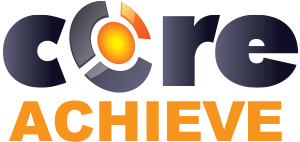How to Improve Your LMS Experience with UX Principles
March, 23 2023
Other posts:
Enhancing Team Dynamics for Effective Group Decision-Making with LMS Integration
Organizations increasingly rely on collaborative efforts to solve complex problems, innovate, and adapt to change, but how do we ensure that collaboration is happening.
Maximizing Small Business Potential with Training Technology
Training technologies can push small businesses ahead of their competitors, but what are the factors that go into choosing the right technology?
Unlocking Employee Potential: The Transformative Benefits of an Interactive Learning Management System (LMS)
Interactive training allows for unlocking employee potential, but how is it done?
Building a Robust Sales Pipeline with Training
Every organization wants a streamlined sales pipeline, but building one requires a series of interlocking activities with one of the most important being training.
Strategies for Adapting In-Person Training to Online Platforms
Online training is one of the most flexible ways of delivering training across organizations, but how do you even begin to adapt in-person training into online?
Are you designing your LMS experience with the users in mind? Utilizing UX principles while designing your LMS experience can make your users' goals much easier to accomplish.
User experience (UX) is how systems could be made to solve a user’s problem quickly and efficiently through inconspicuous design. Given that most Learning Management Systems (LMS) are largely customizable, course creators and designers should be aware of the basic UX principles to ensure that their work isn’t harming users’ goals.
LMS, Goals, and Micro-UX
Most users of a LMS will share similar goals of delivering training as efficiently and effectively as possible. Course builders should focus on UX for courses themselves, or micro-UX. Every course, learning path, discussion, should be designed towards that overarching goal.
User-Centricity
User-centricity is exactly what it sounds like—placing the user at the center of the design process. Whenever building a course for this, you’ll have to design for different target users. These are not just learners or new employees, what are they going to be doing in the organization? Are they sales verses administration?
Employee roles will need to be designed for differently, for example, people who are customer facing will need more hands-on, in-person, whereas administrators-in-training could be primarily hands off. Build the course around what’s more effective to the user.
Consistency
Your courses should have a similar look, feel, and function across courses. If there’s a big change in any of these three things changes dramatically, then learners will need to take some time to readjust to the new conventions—taking away from the learning material.
Furthermore, certain interactions should be saved for similar problems. For example, definitions should all be matching. This will unify the learner’s experience while establishing expectations.
Hierarchy
Hierarchy focuses on how your courses should be structured visually. Use hierarchy to denote the importance of each element of your course. The most important information like the concepts, summaries, or names should appear visibly more important than the rest of the information. This importance can be demonstrated through fonts, color, size, or where on the page it is.
Mixing consistency with hierarchy—every bit of information has its own distinct style—will allow the learner to immediately understand what the information is and how important it is.
Context
The people taking your courses could exist in very different environments which will impact how they take the course; context is about understanding the environment of your target users. For example, are they learning in a corporate office or a retail store? Are they guaranteed to have access to headphones? The answers to those questions will influence what courses to use or how to build them.
User control
Learners should have some freedom to interact with a course, like a manual slide show presentation. However, anytime users have more control over their experience, the more likely they are to make mistakes. Most user control will come from the LMS itself, for example, CoreAchieve allows users to go back anytime in the course preventing them from missing content if they accidentally skip to fast.
Accessibility
Put very simply, accessibility refers to having your courses be as accessible for as many learners as possible. This could be people who have disabilities, to people who aren’t tech-savvy, or people whose native language differs from the course.
Accessibility may seem difficult to design for, but in actuality, small changes can go a long way like font-choice or color.
Usability
Usability may be the simplest to define but it might be the most difficult to quantify—how usable is the your course? Analytics, like the details CoreAchieve automatically grabs and reports, could help answer this question. After all, if learner’s are scoring high in the course it’s either too easy or doing something right.
You could also survey learners, asking them questions like how memorable was the course, how long did it take to understand the hierarchy, or how many times did things happen that they did not expect. This method isn’t foolproof, people will read and respond to the same question differently, but it will give you a broader understanding of the courses usability.
Unnoticeable UX in Courses
By integrating UX design principles into course design, learners can get a more cohesive learning experience. Naturally, this cohesion will makes learning more effective and engaging as learners begin to understand the rules in place. UX is ideally something not noticeable—the experience is that way because it has always been that way—and it is possible to apply it to courses too.
Get started with CoreAchieve for free.
Photo by Alvaro Reyes on Unsplash

Leave comment: